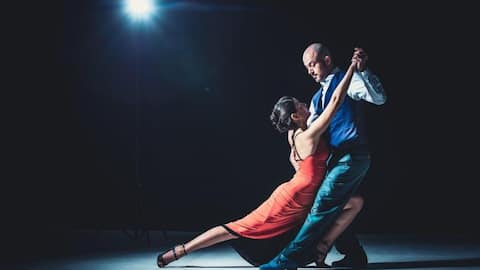Social dancing: Etiquette every dance follower should embrace
What's the story
A one two three and a five six seven! Well, the mystery of that four and eight of the salsa footwork is among the many and we shall solve one of them today. Leandra Joseph, a dance and fitness instructor, shares invaluable insights into the essential etiquettes every dance follower should embrace. From non-verbal communication to gracefully declining dance invitations, let's tap into the social dancing floor with finesse and respect.
Information
Social dancing and followers
Social dancing is an activity in which participants gather to dance for fun as opposed to competing. It includes many different styles, such as ballroom, salsa, and swing. Followers, typically women, respond to the lead of their partner, executing movements guided by the leader's cues.
Etiquette 1
Importance of non-verbal communication in social dancing etiquette
In partner dancing, non-verbal communication is a powerful tool that benefits both the leader and the follower. "It helps both personalities to come forward truly through moment and connection", she says. Every gesture, from a subtle hip movement to an expressive smile, enhances confidence and deepens the connection. Being attentive to your partner's cues is the secret ingredient that elevates the dancing. As Joseph aptly puts it, it's a win-win for both personalities.
Etiquette 2
Maintaining personal boundaries is crucial in partner dancing
The first step? Choose your partner wisely! "If you have an inkling that you might not be as interested in the dance and focus more on the uncomfortable touch, it's perfectly acceptable to refuse politely. During the dance it is important to respect your leader's dynamic and flow with connection irrespective of whether it is someone you know or an absolute stranger on the floor, verbal communication is also a last resort if a certain move/fall felt harsh, she asserts.
Etiquette 3
What's the role of spatial awareness for followers?
Joseph tells us that, "Confidence is the key to having a smooth dance with your partner while maintaining connection, however spatial awareness is fundamental to build that!" Knowing your surroundings and your body movements decreases hindrance both with your partner or other couples around you in an enclosed more crowded social floor. Followers can develop the skill by being in continuous practice and keeping in mind to enhance the experience for themselves and their partners, she adds.
Etiquette 4
How does one decline dance invitations as a follower?
There are times when a follower may need to decline a dance invitation. It's essential to do so politely with a brief explanation. Keeping your body language civil is important too! You can always choose to offer an alternative dance later, states the expert. Gracefully tell them that you're taking a break and are planning to sit out the entire song. This avoids discomfort or confusion. Remember, a smile goes a long way in maintaining a positive atmosphere.
Etiquette 5
How does one express creativity while respecting the lead?
To truly express yourself as a follower, it's essential to be aware of your movements and practice flair. According to Joseph, maintaining eye contact and an active frame allows the leader to accommodate your styling while staying connected. Understanding different lead styles from various partners is a skill that develops over time. Ultimately, finding the balance between following the lead and expressing yourself is key to mastering the dance floor.
